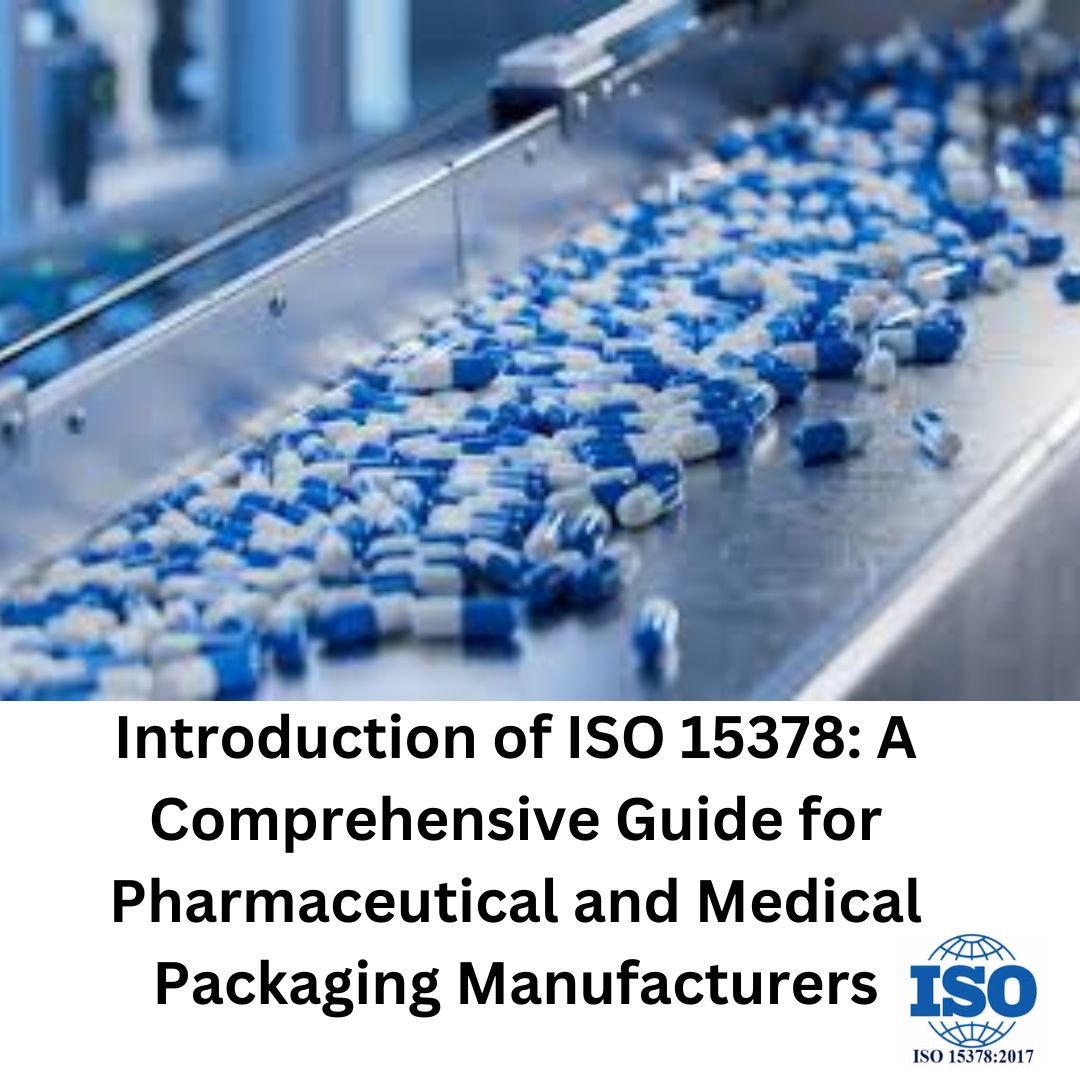Blog Details

Published: July 3, 2025
ISO 15378: Ensuring Quality in Pharmaceutical and Medical Packaging
Introduction
In the highly regulated world of pharmaceuticals and medical devices, packaging is not just a protective layer — it's a vital component in maintaining product integrity, ensuring patient safety, and complying with stringent global standards. One such standard, ISO 15378, specifically addresses the quality management systems (QMS) for manufacturers of primary packaging materials for medicinal products.
If your business is involved in manufacturing glass, plastic, rubber, aluminum, or composite materials that come into direct contact with pharmaceutical or medical products, then ISO 15378 is essential. This international standard not only boosts quality assurance but also improves your organization's credibility, efficiency, and global market access.
What is ISO 15378?
ISO 15378 is titled:
"Primary packaging materials for medicinal products — Particular requirements for the application of ISO 9001:2015, with reference to Good Manufacturing Practice (GMP)."
It is a sector-specific standard that integrates ISO 9001 quality management principles with GMP (Good Manufacturing Practices) tailored to the pharmaceutical packaging industry. It provides requirements for a QMS where an organization:
- → Needs to demonstrate its ability to consistently provide materials that meet customer and applicable regulatory requirements.
- → Aims to enhance customer satisfaction through effective system application, including continual improvement and assurance of conformity to customer and regulatory demands.
Why ISO 15378 Matters
- → Regulatory Compliance: Aligns packaging material production with GMP, aiding in smoother audits and inspections.
- → Risk Management: Helps manage contamination, mix-ups, mislabeling, and other packaging-related risks.
- → Customer Confidence: Demonstrates a strong commitment to quality, boosting trust and market opportunities.
- → Process Efficiency: Reduces waste, improves documentation, and enhances operational consistency.
- → Global Recognition: Certification supports international trade and partnership readiness.
Who Should Implement ISO 15378?
The standard is designed for manufacturers of primary packaging materials that come into direct contact with:
- → Pharmaceutical products (e.g., tablets, capsules, liquids, injections)
- → Medical devices (e.g., diagnostic reagents, injectors, swabs)
- → Nutraceuticals, biotech products, and veterinary medicines
Examples of primary packaging include:
- → Glass vials and ampoules
- → Plastic bottles and containers
- → Rubber stoppers
- → Aluminum foils and blister packs
- → Closures and caps
Key Components of ISO 15378
- → Leadership and Commitment: Management must drive quality by integrating QMS into business processes.
- → Risk-Based Thinking: Proactive risk assessment ensures control over quality-impacting issues.
- → GMP Integration: Covers cleanroom practices, hygiene, equipment validation, traceability, and documentation.
- → Customer Focus: Meets specific client and regulatory packaging requirements.
- → Documented Information: Maintains robust documentation like SOPs, batch records, and QC logs.
- → Process Control: Monitors environmental, operational, and equipment parameters consistently.
- → Continual Improvement: Uses audits and performance reviews to drive ongoing quality enhancements.
Benefits of ISO 15378 Certification
- → Reduced product recalls and rejections
- → Fewer GMP-related non-conformities during audits
- → Improved internal communication and quality culture
- → Stronger supplier-customer relationships
- → Enhanced brand reputation
- → Streamlined compliance with EU, US FDA, WHO, and other regulations
Implementation Steps
- → Gap Analysis: Assess your existing quality system against ISO 15378 requirements.
- → Training and Awareness: Train personnel on standard expectations and their role in compliance.
- → Process Alignment: Update or establish GMP-aligned processes.
- → Documentation: Develop SOPs, manuals, records, and templates as per the standard.
- → Internal Audit: Conduct internal audits to identify weaknesses and opportunities.
- → Management Review: Evaluate QMS performance with top management involvement.
- → Certification Audit: Undergo a two-stage audit by an accredited body.
- → Continual Improvement: Act on audit findings and performance metrics to improve continually.
ISO 15378 and the Future of Pharma Packaging
With rising demand for personalized medicine, biologics, and temperature-sensitive drugs, the role of packaging is evolving. Smart packaging technologies, anti-counterfeit features, and sustainability trends are transforming how products are designed and delivered.
Implementing ISO 15378 prepares companies to meet these emerging challenges by:
- → Encouraging innovation within a controlled, compliant environment
- → Supporting traceability and serialization needs
- → Enhancing readiness for regulatory changes
Conclusion
In an industry where patient health and safety are paramount, ISO 15378 is more than a certification — it’s a commitment to quality, compliance, and continuous improvement. It bridges the gap between manufacturing excellence and regulatory expectations, helping organizations reduce risk, build customer trust, and compete globally.
Whether you're a packaging supplier looking to enhance your market reputation or a pharmaceutical company seeking reliable partners, ISO 15378 is the standard to watch — and adopt.
Looking to Get ISO 15378 Certified?
Partner with a trusted certification body like Ascent Inspecta to streamline your journey. With expert auditors, industry insights, and hands-on support, we ensure your compliance process is smooth, efficient, and value-driven.
Comments Section
We’d love to hear your thoughts,Feel free to leave a comment below:
